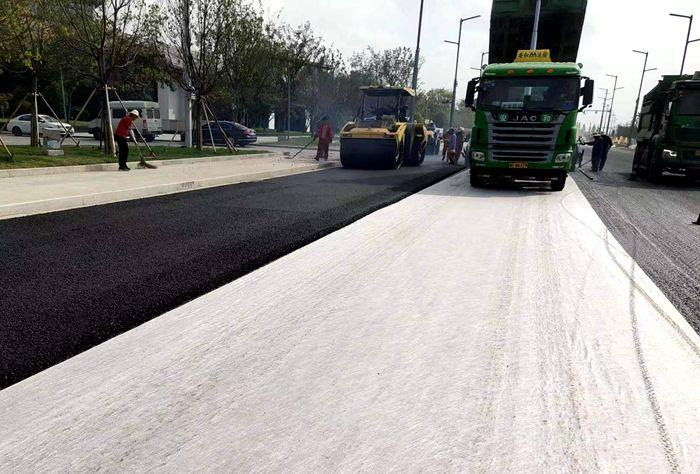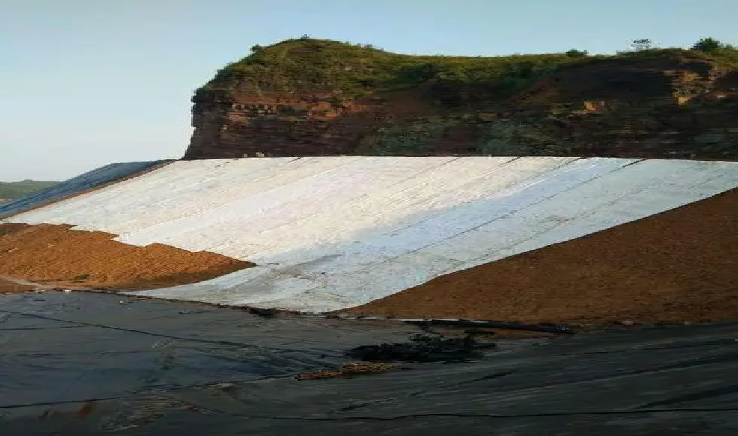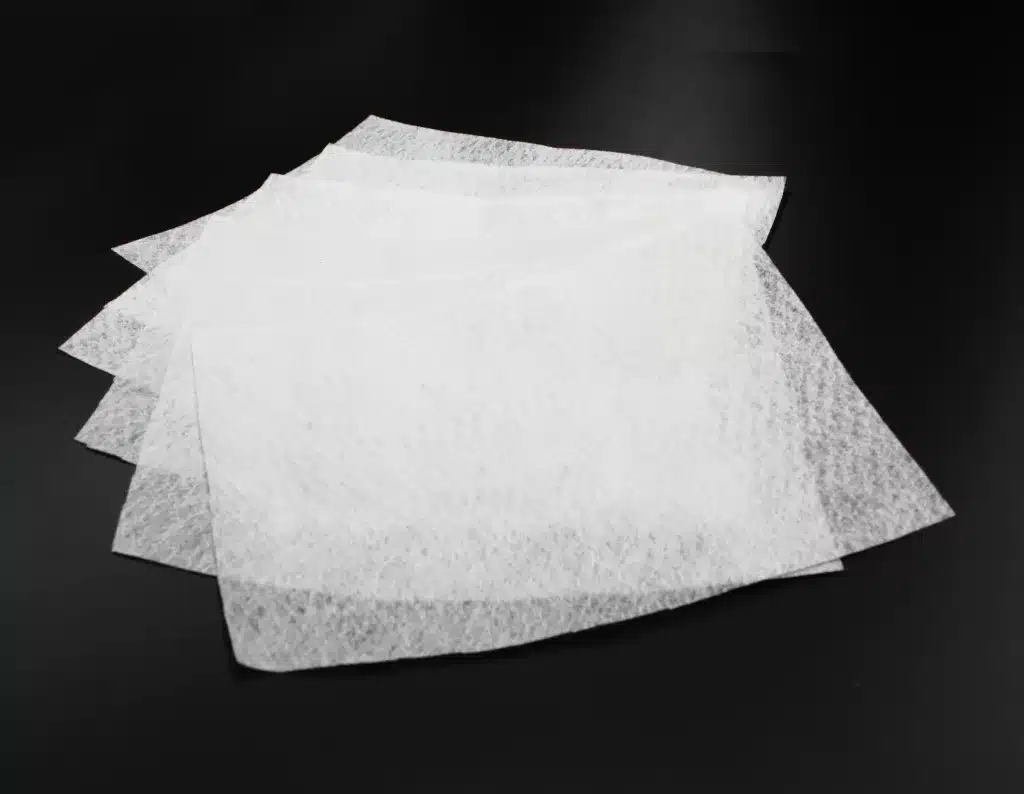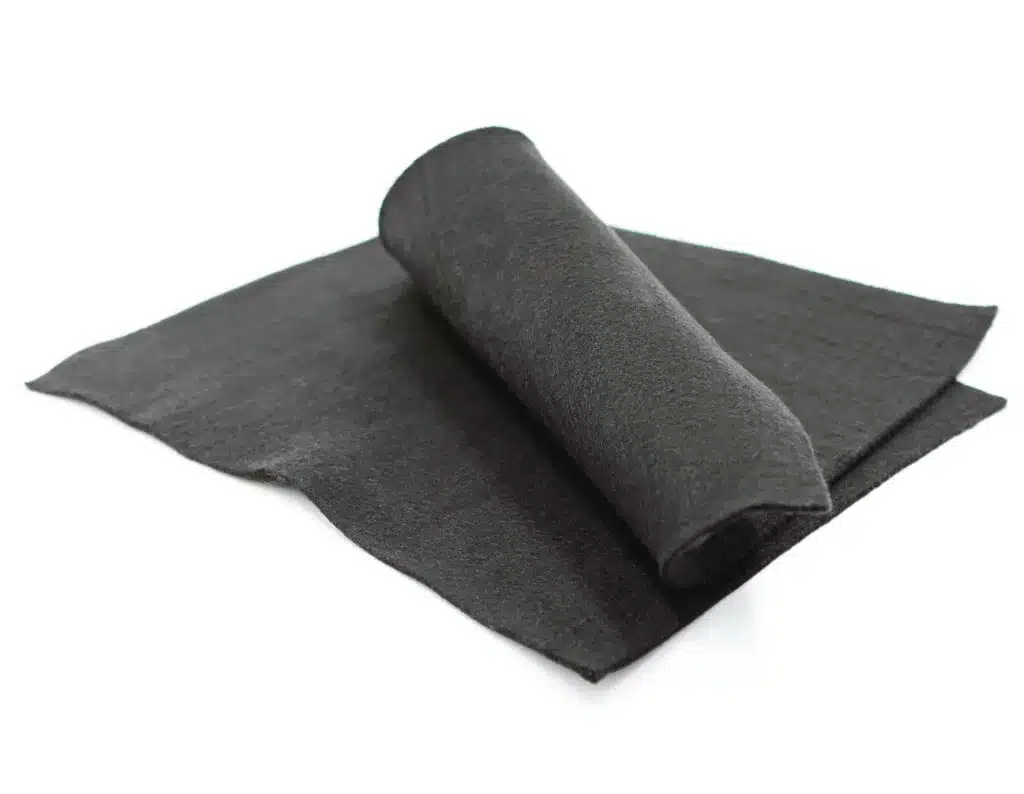+86-159 9860 6917
info@geofantex.com
geofantex@gmail.com
+86-400-8266163-44899

What is the role of geotextiles in landfills?
- Separation: Prevent mixing of waste, soil, and drainage layers, maintaining the integrity of each component.
- Reinforcement: Strengthen weak subgrade soils and reduce the risk of settlement.
- Drainage: Allow controlled water flow while preventing clogging of drainage systems, improving leachate management.
- Leachate Containment: Work in conjunction with geomembranes to prevent contaminants from escaping into surrounding soil and groundwater.
- Erosion Control: Stabilize landfill covers and slopes, protecting against erosion caused by rainfall and runoff.
- Gas Management: Support gas collection and venting systems, enabling safe control of methane and other landfill gases.
Are geotextiles biodegradable?
Geotextiles can be either biodegradable or non-biodegradable, depending on the material used to make them.
- Biodegradable Geotextiles: These are typically made from natural fibers such as jute, coir, or sisal. They are designed to break down over time due to microbial activity, making them environmentally friendly options, particularly for applications like erosion control or temporary soil stabilization.
- Non-Biodegradable Geotextiles: Many geotextiles are made from synthetic materials like polyester, polypropylene, or nylon. These materials do not degrade quickly and can persist in the environment for a long time, making them less eco-friendly but suitable for long-term applications where durability is essential.
The choice between biodegradable and non-biodegradable geotextiles depends on the project requirements, including environmental impact, expected lifespan, and functionality.
Is geotextile environmentally friendly?
Geotextiles are considered environmentally friendly when properly designed and applied, especially in landfill engineering and environmental protection projects.
- Environmental Protection: Geotextiles reduce soil erosion, control sediment migration, and help protect surrounding soil and groundwater from contamination.
- Reduced Resource Consumption: By improving soil stabilization and drainage efficiency, geotextiles minimize excessive excavation and material replacement.
- Long-Term Durability: High-performance geotextiles extend the service life of landfill systems, reducing maintenance frequency and construction waste.
- Leachate & Gas Management: In layered landfill systems, geotextiles support drainage and gas collection layers, enhancing overall environmental safety.
- Recyclable Materials: Most geotextiles are manufactured from recyclable polymers such as polypropylene or polyester.
- Sustainability Contribution: When used in landfill covers and slope protection, geotextiles support vegetation growth and long-term site rehabilitation.
Although most geotextiles used in landfills are not biodegradable, their ability to prevent pollution, improve system performance, and extend landfill lifespan makes them a sustainable engineering solution for modern waste management.

Why are landfills designed in layers?
Los geotextiles desempeñan un papel fundamental en la ingeniería moderna de vertederos, contribuyendo a la seguridad, durabilidad y protección ambiental. Sus funciones principales incluyen:
- Separación: mantienen separados distintos materiales como residuos, suelo y capas de drenaje, asegurando la integridad estructural;
- Refuerzo: fortalecen suelos débiles y previenen asentamientos irregulares;
- Drenaje: permiten el paso del agua mientras evitan obstrucciones, facilitando la gestión de lixiviados;
- Contención de lixiviados: trabajan junto con geomembranas para evitar la filtración de sustancias contaminantes;
- Control de erosión: protegen las superficies del vertedero, manteniendo la estabilidad de la cobertura;
- Gestión de gases: soportan sistemas de ventilación de gas, contribuyendo a la seguridad en la liberación controlada de metano y otros gases.
En conjunto, los geotextiles mejoran el rendimiento del vertedero, reducen riesgos ambientales y contribuyen a prácticas de gestión de residuos más sostenibles.
Geotextiles play a vital role in modern landfill engineering by ensuring structural integrity, managing leachate, and minimizing environmental impact. While not biodegradable, their use in landfill construction contributes to sustainable waste management practices. Understanding their role helps in appreciating how engineering solutions can mitigate the environmental challenges posed by waste disposal.



Get Free Sample
We’ll respond as soon as possible(within 12 hours)






















